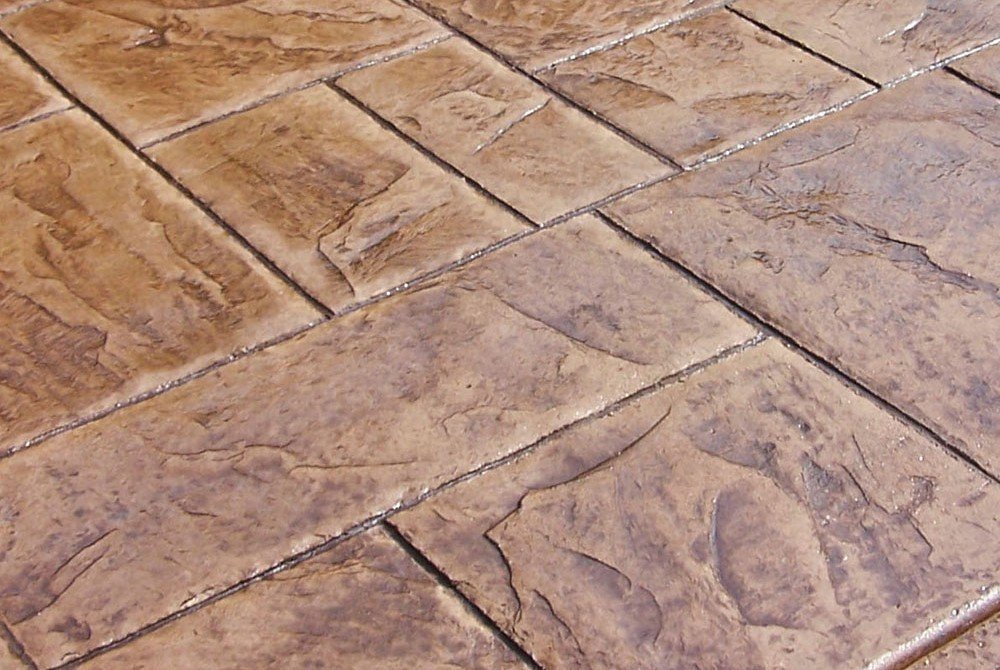Concrete stamping offers a range of benefits that make it an appealing choice for homeowners and businesses alike. One of the primary advantages is the aesthetic flexibility it provides. With a variety of stamp patterns and colors available, you can easily mimic the look of natural materials like stone, brick, or tile without the high cost and maintenance associated with them. This versatility allows for unique designs that can complement any architectural style, making it a strong contender in the ongoing debate of Concrete Stamping vs Paving.
Another significant benefit of concrete stamping is its durability. Unlike traditional paving materials, stamped concrete is less susceptible to wear and tear from weather conditions, traffic, and heavy loads. Once sealed, stamped concrete can withstand the elements and maintain its appearance for years. This longevity not only enhances the property's curb appeal but also reduces the frequency and costs associated with repairs and resurfacing, positioning it as a wise investment when considering Concrete Stamping vs Paving.
Maintenance is also easier with stamped concrete compared to many paving options. While traditional pavers often require regular cleaning, repositioning, and replacement of individual stones, stamped concrete generally only needs periodic sealing and cleaning to keep it looking fresh. This ease of care further supports its case in the Concrete Stamping vs Paving discussion, making it suitable for busy homeowners and commercial properties looking to minimize upkeep efforts.
Exploring Paving Options and Features
Paving typically involves laying individual stones, bricks, or slabs in a pattern that can be both practical and visually appealing. This method provides excellent durability and a wide variety of styles and colors that can complement any architectural design. Additionally, paving allows for ease of repair; if individual pieces become damaged, they can be replaced without having to redo the entire area. This makes it a practical option for high-traffic areas or climates with extreme weather conditions.
On the other hand, concrete stamping presents an ingenious way to mimic the look of more expensive materials, such as stone or tile, without the associated cost. This technique involves pouring concrete and then imprinting patterns and textures onto its surface. The result can be stunning and sets concrete stamping apart from traditional paving. It not only allows for creative expression through various designs but also leads to fewer joints and seams, making it easier to maintain and clean over time.
Ultimately, the decision between concrete stamping vs paving comes down to specific needs, aesthetic preferences, and budget considerations. While paving offers flexibility in terms of repairs and a classic look, concrete stamping brings innovation and style to the table. By exploring both options closely, you can determine which outstanding features align best with your outdoor vision.
Cost Comparison of Both Techniques
When considering the differences between concrete stamping and paving, one key factor to evaluate is the cost. Both techniques have their own unique pricing structures, which can significantly impact your overall budget. Concrete stamping typically involves a higher initial investment compared to traditional paving. This is due to the specialized materials and skilled labor required to create intricate designs and patterns. However, many homeowners find that the visual appeal of stamped concrete justifies the expense.
On the other hand, paving can be more cost-effective in the short term. Traditional paving methods, such as asphalt or concrete slabs, generally require less labor and fewer materials. This can translate into lower installation costs, making it an attractive option for those on a tighter budget. Yet, it's important to remember that while paving might be cheaper upfront, it may not offer the same long-term benefits as concrete stamping. Maintaining the quality and appearance of paving surfaces can require more frequent repairs and resurfacing.
When assessing the long-term value, think about factors like durability and maintenance. Stamped concrete surfaces tend to be more durable and may require less upkeep over time, which could save you money in the long run. In contrast, paving options might need regular sealing and patching, adding to your overall expenses. Thus, while Concrete Stamping vs Paving might present different initial costs, the true value lies in the longevity and maintenance needs of each option.
Ultimately, it’s essential to weigh your budget against your aesthetic desires and future maintenance considerations. Whether you lean towards the elegance of concrete stamping or the practicality of paving, understanding the cost dynamics will help you make a more informed decision for your project.
Making the Right Choice for You
When it comes to choosing between concrete stamping and paving, it’s important to consider your specific needs and preferences. Each option has its unique benefits and considerations that can impact the final look and functionality of your project. Concrete stamping can give you a beautiful and customizable finish, while paving typically offers durability and ease of repair.
Concrete stamping allows for a variety of designs, imitating materials like stone, brick, or tile. This option is perfect if you aim to enhance the aesthetic appeal of your space without sacrificing strength. On the other hand, paving stones, often made of natural stone or concrete, provide a traditional, timeless look. They are usually set in a way that allows for easy replacement of individual stones if damage occurs, making maintenance straightforward.
Think about the climate and environment where you live as well. In regions with freeze-thaw cycles, concrete stamping might be more prone to cracking compared to the flexibility of a properly installed paving system. Additionally, consider how frequently the area will be used. High-traffic areas may benefit more from the durability of paving stones, while decorative walkways or patios can shine with the beauty of stamped concrete.
Ultimately, the decision between Concrete Stamping vs Paving comes down to your style preferences, budget, and practical needs. Take the time to weigh the pros and cons of each option. Gathering samples and consulting with professionals can also help ensure you make the right choice for your project.
